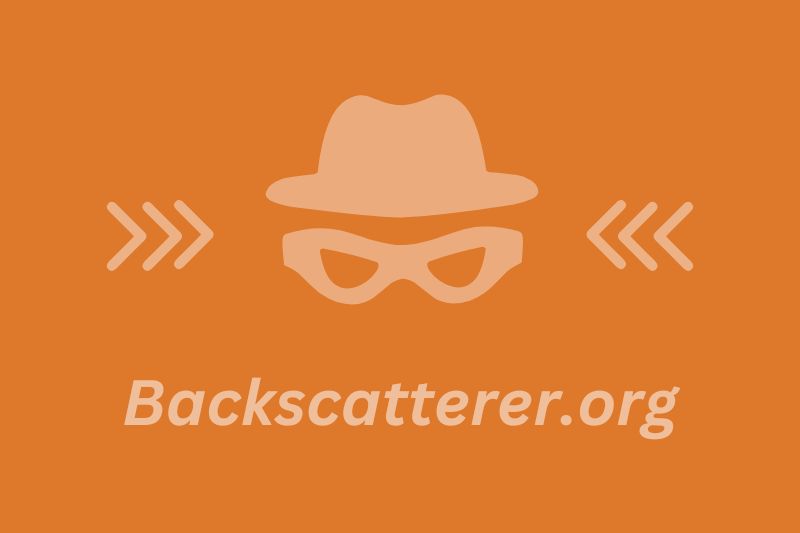Ever feel like email deliverability is out to get you? The Backscatterer blacklist is one of those hidden problems that can sneak up and create a mess. And no, it’s not just about a few emails going MIA—you could get your IP flagged, your legitimate messages bouncing, and your email server’s reputation sinking.
The Backscatterer blacklist isn’t focused on spammy content. Instead, it’s all about backscatter—annoying, misdirected bounce messages sent by servers that aren’t configured quite right. Sounds technical, but the impact is very real.
So, if you’ve ever found yourself asking, “Why aren’t my emails getting through?”—this is the place to start. Learning how the Backscatterer blacklist works is your first step to protecting your system and keeping your emails in your recipients’ inboxes. Doesn’t that sound like a win? Let’s get into it.
What is Backscatter? The Misunderstood Villain of Email Servers
Backscatter might sound harmless—but it’s anything but. It’s essentially a bounce message gone rogue. Instead of landing where they’re supposed to, they end up bombarding innocent folks who had nothing to do with the original email.
Here’s how it happens: A spammer sends millions of spam emails with a fake “From” address—maybe even yours. When invalid addresses trigger bounce messages, misconfigured email servers don’t send them back to the spammer. Instead, they get sent to the forged sender—you. Suddenly, your inbox or server is swamped with messages you never even sent.
But it doesn’t stop there. Some servers use sender callouts to check if an email address is valid. It’s a smart idea that spammers exploit too, using fake addresses. Your server might end up “calling out” to innocent ones, causing even more chaos.
Why does this matter? Because mail servers generating backscatter get flagged as troublemakers. That’s how they end up on the Backscatterer blacklist. Once you’re on that list, your emails could start getting blocked left and right.
Backscatter might start with a small misconfiguration, but the fallout can snowball—flooded inboxes, damaged reputations, and endless headaches. Understanding it is the first step to keeping your server clean and your emails moving forward.
Why Your IP Might Be on the Backscatterer Blacklist
Here’s the thing: landing on the Backscatterer blacklist isn’t necessarily about sending spam—it’s about behavior. Even if your intentions are good, your server could still wind up flagged for causing backscatter, often due to:
- Misconfigured Servers: These send bounce messages to spoofed “From” addresses instead of blocking incoming spam at the source.
- Incorrect Automated Bounce Messages: Bounces for undeliverable emails end up targeting innocent recipients instead of the actual sender.
- Compromised User Accounts: Spammers hijack these to send forged emails, generating even more backscatter chaos.
Pretty much all IP addresses can fall into these traps. For example, mail server administrators may enable sender callouts, thinking it’s a legitimate way to verify addresses. But spammers love to exploit these features, leading to unintended backscatter.
That’s why proper server configuration and attention to detail can save you a ton of headaches—and keep your emails flowing smoothly. Stay diligent!
Checking Your Status: Is Your IP on the Backscatterer List?
Have you noticed unusual bounced emails or a drop in your email delivery rates? Your IP might be flagged on the Backscatterer blacklist. The good news is that checking your status is quick and simple.
Here’s how to check your IP on backscatterer.org:
- Head to Backscatterer.org: Use their lookup tool—it’s easy to find on their site.
- Enter your server’s IP address: Type in your server’s public IP—contact your hosting provider or admin if you’re not sure what it is
- Click “Test.”: The tool will tell you if your IP is listed and explain why.
If you’re flagged, don’t panic. Start by addressing the root cause, like misconfigurations or misdirected bounces. And to make sure you’re off blacklists for good, check out InboxAlly. It helps monitor your sender reputation, spot potential issues, and improve deliverability so you can avoid blacklists altogether.
Regularly check your IP status and take proactive steps to keep your emails on track. It’s a routine maintenance for your email system—it keeps everything running and saves you from bigger headaches later.
How to Remove Yourself from the Backscatterer Blacklist
Getting your IP address removed from the Backscatterer blacklist takes some work, but it’s doable if you tackle the problem at its source. Here’s how to handle it:
Step 1: Fix the Root Cause
An obvious one. Figure out what caused the listing in the first place. Some common problems include:
- Misconfigured servers: Sending bounce messages to spoofed addresses instead of rejecting spam outright.
- Compromised user accounts: Spammers hijacking accounts to send forged emails
- Poor bounce management: Automated systems creating unnecessary backscatter.
Take your time to fix these thoroughly. A quick fix won’t cut it—delisting only works if the problem is truly resolved.
Step 2: Submit a Delisting Request
Once you’ve fixed the issue, head to Backscatterer.org and fill out their delisting form. You’ll need:
- Your IP address.
- A short explanation of what went wrong and how you fixed it.
Keep in mind that delisting isn’t automatic. The Backscatterer team will likely verify your server changes before approving removal.
Step 3: Stay Vigilant
Delisting isn’t the end of the story. Keep an eye on your server configurations and check your IP status regularly. A small slip-up can land you back on the list, causing more delays and frustration.
The key to staying off the blacklist is fixing the root problem and maintaining proper email hygiene. Prevention is always easier than cleanup! On that note…
Preventing Future Blacklistings: Keeping Your Email Server Safe
Avoiding the Backscatterer blacklist isn’t rocket science, but you still need to stay proactive. A little care goes a long way in keeping your system safe and your emails flowing.
Here’s how to stay in the clear:
- Proper Server Configuration: Set your servers to reject spam outright rather than sending bounce messages to spoofed addresses. Misconfigurations are one of the biggest culprits behind backscatter.
- SPF, DKIM, and DMARC Authentication: These protocols verify that emails are coming from legitimate sources, stopping spoofing in their tracks and reducing collateral spam risk.
- Disable Outdated Features: Misdirected autoresponders and sender callouts are outdated practices that spammers exploit. Turning them off protects your system.
Use InboxAlly
Having the right setup is a great start, but staying off blacklists takes a bit of ongoing care which is where InboxAlly can do wonders. It’s designed to strengthen your sender reputation and ensure your emails reach inboxes every time.
With InboxAlly, you can:
- Build trust with email providers by simulating positive interactions with your emails.
- Spot potential deliverability issues early before they cause bigger problems.
- Keep your sender reputation clean, reducing bounce rates and blacklist risks.
The combination of proper server management and InboxAlly gives you peace of mind, knowing your email system is running smoothly and securely—worth considering if you’re serious about keeping your email system in top shape!
Quick Checklist for Backscatter Protection
Want to avoid backscatter headaches? Here’s a simple, no-fuss checklist to keep your email system running smoothly and blacklist-free:
| Check your server configurations. | Make sure bounce messages are handled properly and never sent to spoofed addresses. |
| Use SPF, DKIM, and DMARC authentication. | These tools protect your domain from spoofing and keep your emails legitimate. |
| Monitor your IP status regularly. | Use tools like Backscatterer.org to spot problems before they spiral. |
| Reject spam at the server level. | Don’t generate unnecessary bounce messages—stop spam in its tracks. |
| Rely on InboxAlly for extra protection. | It improves your sender reputation, reduces bounce rates, and helps you avoid blacklist trouble altogether. |
Quick, effective, and easy to follow—keep it in your back pocket for whenever you need a refresher!
Final Thoughts
Getting off and staying off the Backscatterer blacklist doesn’t have to be a nightmare. Once you understand how backscatter works, fix any issues on your server, and use tools like InboxAlly, you’re in a great position to keep your emails landing where they should—right in the inbox.
Just like a car, your email system needs regular checkups and care to run smoothly. By giving it that little extra attention, you’ll avoid breakdowns (or blacklists) and keep things running like a dream.
Ready to take control? Start by exploring how InboxAlly can help keep your emails on the right path. You’ve got this!



